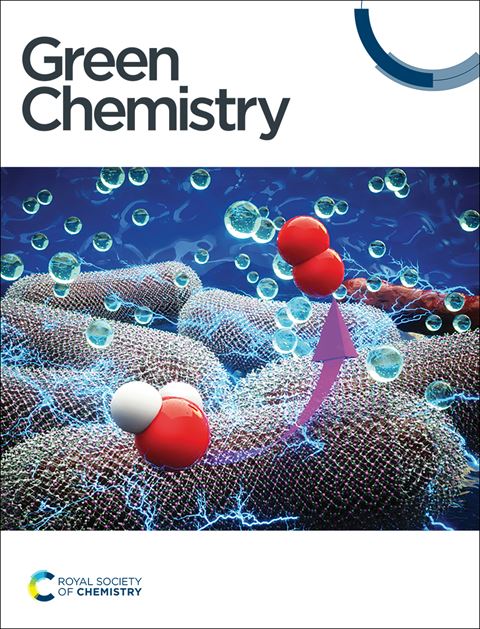Natural wood as a lithium metal host†
IF 9.2
1区 化学
Q1 CHEMISTRY, MULTIDISCIPLINARY
引用次数: 0
Abstract
Lithium metal stands out as an advanced anode material for next-generation rechargeable high-energy-density batteries. Nevertheless, the non-uniform behavior of Li plating/stripping causes severe dendrite growth and volume expansion, inducing rapid lifespan decay and even safety hazards. Introducing a Li host with a three-dimensional (3D) structure and interconnecting pores has been proven effective for solving these issues. In this contribution, natural wood, which possesses an exquisite 3D interconnected hierarchical porous structure, is employed as a Li host. The wood host facilitates homogenization of the electric field intensity near the Li anode, thereby regulating the homogeneity during Li plating/stripping. As demonstrated in Li|Cu half cells, the wood host enables 66 cycles with a coulombic efficiency retention of 80%, surpassing the mere 25 cycles achievable without the host. Furthermore, the wood/Li composite anode exhibits reduced polarizations and extended cycling lifespans in both Li|LFP and Li|S full coin cells. Leveraging the unique characteristics of the natural wood structure, an all-wood-based Li|S full coin cell is also assembled. This study not only illuminates the promise of wood as a material for optimizing Li anode performance, but also offers valuable insights for the design of structures for materials used in rechargeable batteries.

天然木材作为锂金属宿主†
锂金属作为下一代可充电高能量密度电池的先进负极材料脱颖而出。然而,锂电镀/剥离的不均匀行为导致严重的枝晶生长和体积膨胀,导致快速的寿命衰减甚至安全隐患。引入具有三维(3D)结构和相互连接的孔隙的Li宿主已被证明是解决这些问题的有效方法。在这项贡献中,天然木材具有精致的3D互联分层多孔结构,被用作Li宿主。木质主体有利于锂阳极附近电场强度的均匀化,从而调节镀/剥离过程中的均匀性。正如在Li|Cu半电池中所证明的那样,木材宿主可以进行66次循环,库仑效率保持80%,超过了没有宿主只能实现的25次循环。此外,木材/锂复合阳极在Li|LFP和Li|S全硬币电池中均表现出极化减少和循环寿命延长。利用天然木结构的独特特性,还组装了一个全木质的Li bbbbs全硬币电池。这项研究不仅阐明了木材作为优化锂阳极性能的材料的前景,而且为可充电电池中使用的材料结构设计提供了宝贵的见解。
本文章由计算机程序翻译,如有差异,请以英文原文为准。
求助全文
约1分钟内获得全文
求助全文
来源期刊

Green Chemistry
化学-化学综合
CiteScore
16.10
自引率
7.10%
发文量
677
审稿时长
1.4 months
期刊介绍:
Green Chemistry is a journal that provides a unique forum for the publication of innovative research on the development of alternative green and sustainable technologies. The scope of Green Chemistry is based on the definition proposed by Anastas and Warner (Green Chemistry: Theory and Practice, P T Anastas and J C Warner, Oxford University Press, Oxford, 1998), which defines green chemistry as the utilisation of a set of principles that reduces or eliminates the use or generation of hazardous substances in the design, manufacture and application of chemical products. Green Chemistry aims to reduce the environmental impact of the chemical enterprise by developing a technology base that is inherently non-toxic to living things and the environment. The journal welcomes submissions on all aspects of research relating to this endeavor and publishes original and significant cutting-edge research that is likely to be of wide general appeal. For a work to be published, it must present a significant advance in green chemistry, including a comparison with existing methods and a demonstration of advantages over those methods.
 求助内容:
求助内容: 应助结果提醒方式:
应助结果提醒方式:


